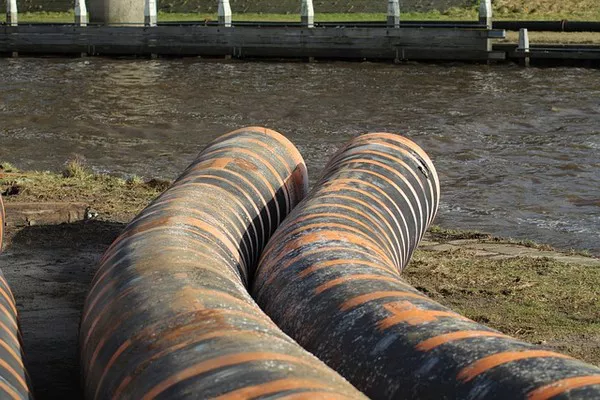Sewage treatment is a critical process that ensures the safe and responsible disposal of wastewater from homes, industries, and communities. It plays a crucial role in protecting public health, preserving the environment, and conserving water resources. The treatment of sewage involves several intricate stages, each designed to remove contaminants and pollutants efficiently. In this article, we will delve into the various stages of sewage treatment, highlighting their significance in maintaining a clean and sustainable environment.
Preliminary Treatment
The sewage treatment process begins with preliminary treatment, which serves to remove large debris and objects from the wastewater. These materials can include sticks, leaves, plastics, and other solid items that may clog or damage downstream equipment. Preliminary treatment typically involves screening and grit removal processes.
Screening involves the use of bar screens or fine mesh screens to capture large objects, preventing them from entering the treatment facility. This step helps protect pumps, pipes, and subsequent treatment units from damage.
Grit removal involves the removal of sand, gravel, and other heavy particles that may settle at the bottom of wastewater. These abrasive materials can cause wear and tear on equipment and impede the treatment process if not removed.
Primary Treatment
After preliminary treatment, the wastewater undergoes primary treatment. This stage aims to separate and settle solid particles and organic matter from the liquid portion. The primary treatment process primarily utilizes sedimentation tanks, also known as primary clarifiers.
In these tanks, wastewater is allowed to sit for an extended period, allowing suspended solids to settle to the bottom as sludge. Meanwhile, lighter substances, like oils and greases, float to the surface and are skimmed off. The clarified wastewater, now with reduced levels of solids and contaminants, is then sent to secondary treatment for further processing.
Primary treatment significantly reduces the organic load in sewage, making it easier and more efficient to treat in subsequent stages.
Secondary Treatment
Secondary treatment is a biological process that further purifies the wastewater by breaking down organic matter using microorganisms. This stage is essential for reducing the levels of pollutants and pathogens in sewage. There are two primary methods of secondary treatment: activated sludge and trickling filters.
Activated sludge treatment involves aerating the wastewater and introducing a mixed culture of bacteria and other microorganisms. These microorganisms consume the organic matter, effectively converting it into carbon dioxide, water, and more microorganisms. The resulting sludge is settled out in secondary clarifiers and can be recycled or disposed of.
Trickling filters, on the other hand, use a bed of rocks or plastic media to support the growth of microorganisms. Wastewater is trickled over the filter bed, allowing microorganisms to adhere to the media and degrade organic pollutants. The treated water is then separated from the solids in secondary clarifiers.
Both methods are effective at reducing the biological oxygen demand (BOD) and chemical oxygen demand (COD) of sewage, making it less harmful to aquatic ecosystems when discharged.
Tertiary Treatment
While primary and secondary treatment processes are effective at removing a significant portion of contaminants, tertiary treatment further enhances the quality of treated wastewater. Tertiary treatment is especially important when the effluent is discharged into sensitive environments or used for purposes such as irrigation or industrial processes.
Common methods of tertiary treatment include filtration, chemical treatment, and advanced oxidation processes (AOPs). Here’s a closer look at each:
a. Filtration: This involves passing the wastewater through sand, gravel, or specialized media to remove fine suspended particles and remaining microorganisms. Filtration can effectively reduce turbidity and improve the clarity of the water.
b. Chemical Treatment: Chemical coagulants and flocculants are often used to precipitate fine particles and phosphorus from the wastewater. These chemicals help in the formation of larger, settleable solids that can be easily removed.
c. Advanced Oxidation Processes (AOPs): AOPs use chemical reactions to break down persistent organic pollutants and disinfect the water. Ultraviolet (UV) radiation and ozone are commonly employed in AOPs to destroy contaminants that are resistant to traditional treatment methods.
Tertiary treatment ensures that the effluent meets stringent water quality standards and poses minimal risks to the receiving environment or downstream users.
Disinfection
Disinfection is the final step in sewage treatment, and it involves the elimination of pathogenic microorganisms to ensure that the treated wastewater is safe for discharge or reuse. Common disinfection methods include chlorination, ultraviolet (UV) disinfection, and ozonation.
Chlorination involves adding chlorine gas or sodium hypochlorite to the effluent to kill bacteria and viruses. While effective, it can produce potentially harmful disinfection byproducts (DBPs) and may require dechlorination before discharge.
UV disinfection uses ultraviolet light to damage the DNA of microorganisms, rendering them incapable of reproducing. It is a chemical-free and environmentally friendly method.
Ozonation involves the injection of ozone gas into the wastewater, which reacts with and destroys microorganisms and organic compounds. It also helps remove color and odor from the effluent.
Disinfection is critical for protecting public health and preventing the spread of waterborne diseases.
Conclusion
Sewage treatment is a complex and multifaceted process that plays a crucial role in safeguarding public health, preserving the environment, and conserving water resources. Each stage of sewage treatment serves a specific purpose, from removing large debris in preliminary treatment to disinfecting the effluent in the final step. Together, these stages ensure that wastewater is transformed into a clean and safe product that can be safely discharged into the environment or reused for various purposes. As the global population continues to grow, the importance of effective sewage treatment becomes even more evident, underscoring the need for continued research and innovation in this vital field.

